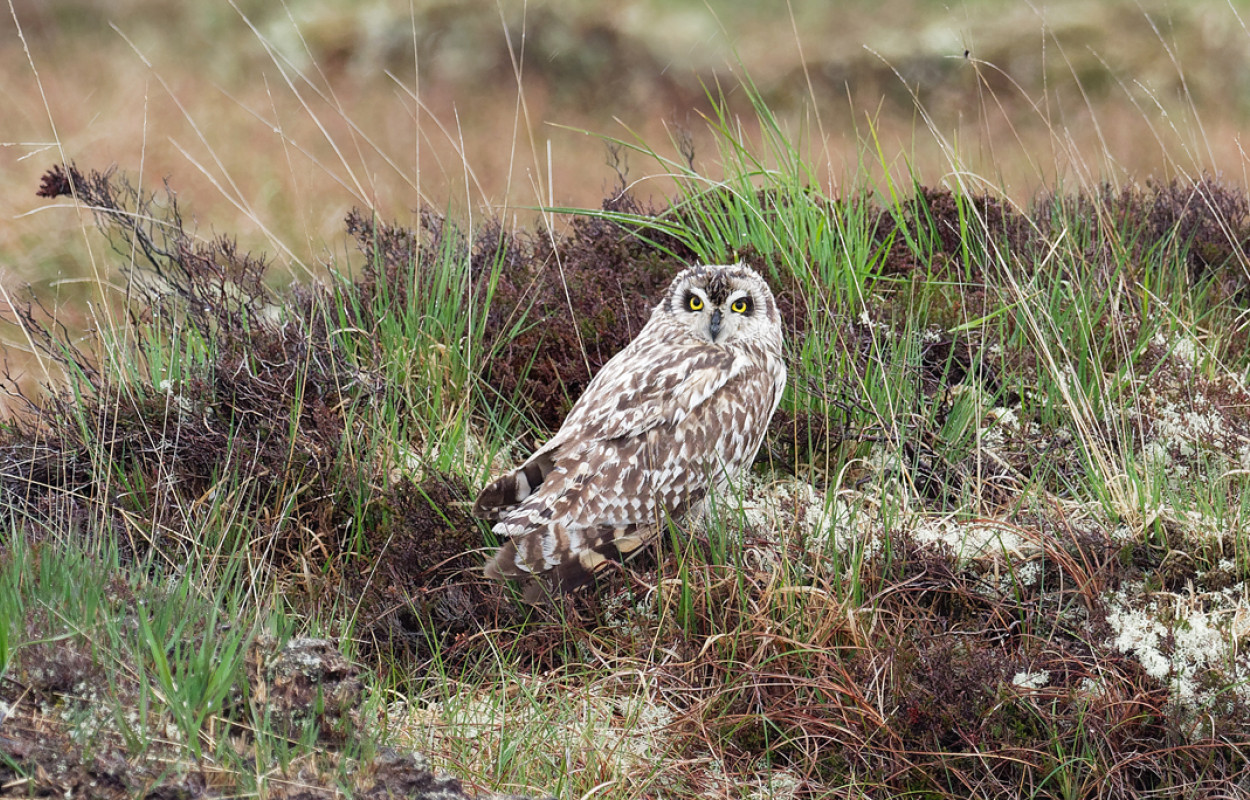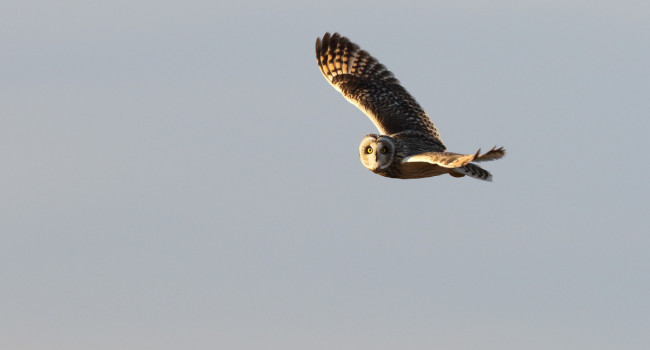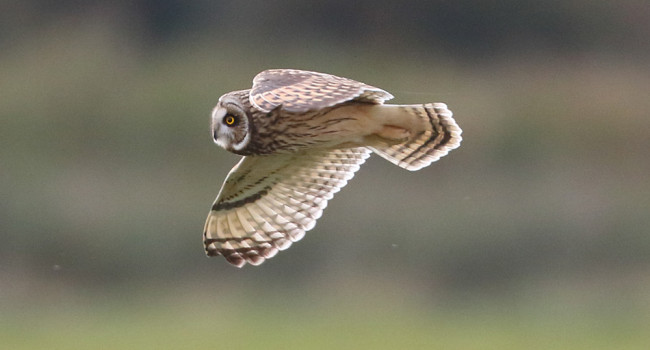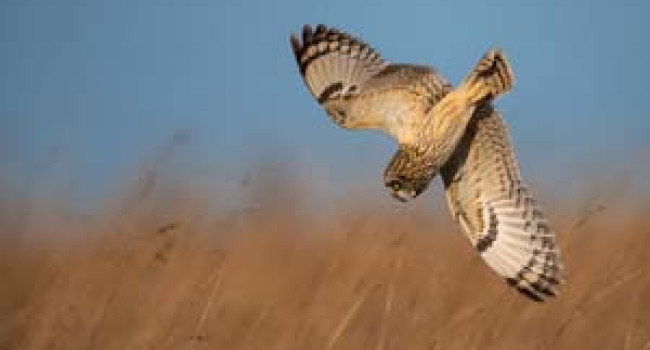Use of dwarf shrubland–grassland mosaics by a nomadic predatory bird, the Short-eared Owl Asio flammeus

Author(s): Calladine, J., Southall, C., Wetherhill, A. & Morrison, N.
Published: April 2024
Journal: Journal of Ornithology
Digital Identifier No. (DOI): 10.1007/s10336-024-02174-z
A substantial proportion of Britain’s Short-eared Owl population breeds on managed moorland, where these avian predators specialise on small mammal prey. Such moorland is widely managed for Red Grouse through the control of predators and the burning of vegetation, practices which can be controversial. Efforts to increase or restore heather and other dwarf-shrub cover, which are seen by many as a conservation priority, may also alter the nature of the moorland habitat used by Short-eared Owls.
Set against this background, it has become especially pertinent to understand how Short-eared Owls use moorland habitats and, in particular, the different vegetation types present. Because of their nomadic behaviour, there is also a need to understand how these birds use similar open habitats elsewhere. This tracking study, which involved 17 fully-grown Short-eared Owls tagged with GPS tracking devices in Scotland between 2017 and 2020, provided an opportunity to look at individual habitat use across the different sites used by these birds in Scotland, England and Norway.
The study looked at habitat use within individual home ranges, i.e. those areas used by the birds for more than five consecutive days and which were less than 500 hectares in size. Locations within 50 m of nest sites were excluded from the analysis because females may continuously incubate eggs or brood small chicks, skewing attempts to understand habitat use.
Relative to their availability, there was a tendency for Short-eared Owls in Britain to preferentially use areas of grassland, including those smaller patches located within a wider Heather-grassland mosaic. In contrast, the tracking data from those individuals that also spent time in Norway revealed a tendency to hunt more over dwarf shrubs. The dwarf shrub community in Norway is more diverse than here in Britain, both in terms of species composition and structure. Such differences are likely to reflect prey availability, but they also highlight the behavioural plasticity of these birds.
The results of this work can be used to inform relevant conservation strategies in at least three different ways. They inform the habitat management of specific sites, highlight landscapes towards which targeted management could be directed, and identify specific sites for conservation designation, protection and management.
Abstract
The constituent habitat use by remotely tracked tagged Short-eared Owls Asio flammeus on moorland and other dwarf shrubland–grassland mosaics was assessed in Britain and Norway. A preference for the owls to hunt over patches of graminoids within managed moorland in Britain contrasted with a tendency to hunt more over dwarf shrubs in Norway. The observed differences likely reflect the availability of small mammal prey and how this contrasts between largely single-species stands of managed heather Calluna vulgaris in Britain and more naturally diverse (species and structure) dwarf shrubland in Norway. Diurnal patterns of landscape use differed between areas, with owls in Scotland and Norway tending to hunt over ground at higher elevations at night but the reverse being observed in England. The difference demonstrates behavioural plasticity of Short-eared Owls, potentially driven by minimising risks from predation within different areas. Conservation implications include increased and proportionate priority for grassland management on British moorlands and the restoration of natural montane dwarf shrublands, both routes to enhance conditions for and the availability of small mammal prey. As a generality, site protection for Short-eared Owls and their monitoring need to acknowledge uncertainties around variations in abundance and occupation by this nomadic species.








Share this page